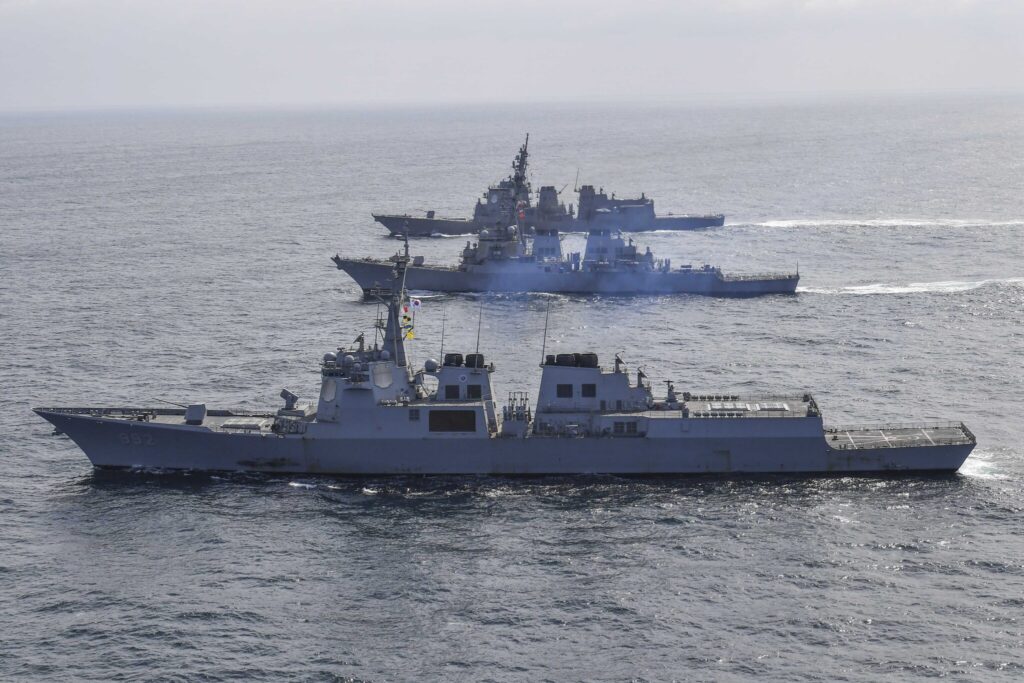The United States, South Korea and Japan staged joint naval missile defense exercises on Monday to improve responses to North Korean threats, as Pyongyang accused Washington of ramping up “nuclear blackmail” with military drills. The three nations agreed at talks in Washington on Friday to hold regular missile defense and anti-submarine exercises in their efforts to boost diplomatic and military cooperation. The Associated Press has the story:
US, South Korea, Japan conduct joint drills
Newslooks- SEOUL, South Korea (AP)
The United States, South Korea and Japan conducted a joint missile defense exercise Monday in waters near the Korean Peninsula as they expand military training to counter the growing threats of North Korea’s nuclear-capable missiles.
Last week, North Korea conducted one of its most provocative weapons demonstrations in years by flight-testing for the first time an intercontinental ballistic missile powered by solid propellants, as it pursues a weapon that’s more responsive, harder to detect and could directly target the continental United States.
North Korea’s unprecedented run of weapons tests has so far involved more than 100 missiles of various ranges fired into the sea since the start of 2022 as the country attempts to build a viable nuclear arsenal that could threaten its rival neighbors and the United States.
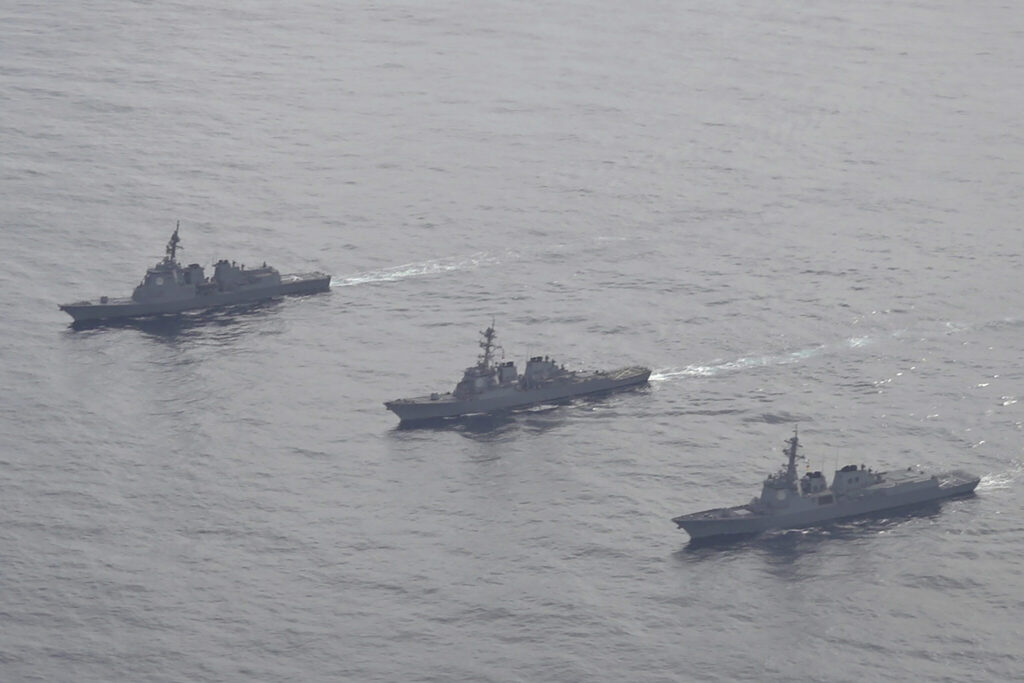
The South Korea-U.S.-Japan training could trigger a belligerent response from North Korea, which condemns the United States’ military drills with its Asian allies as invasion rehearsals. The North has used those drills as a pretext to accelerate its own weapons development, creating a cycle of tit-for-tat that has raised tensions in recent months.
South Korea’s navy said Monday’s three-way naval drills took place in international waters off the country’s eastern coast and focused on mastering the procedures for detecting, tracking and sharing information on incoming North Korean ballistic missiles. The one-day naval exercise involved an Aegis destroyer from each country.
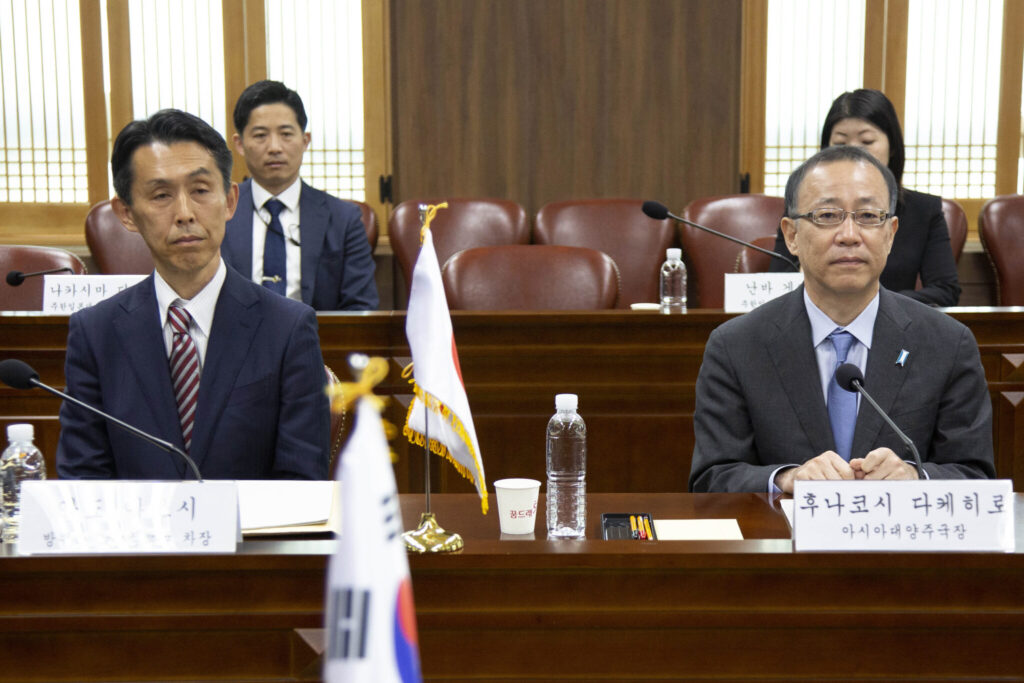
“The drills’ goal is to improve our response capabilities against ballistic missiles and strengthen our ability to conduct joint operations as North Korea’s nuclear and missile threats continue to escalate,” Jang Do-young, a spokesperson of South Korea’s navy, said in a news briefing. Japan’s Joint Staff in a statement stressed the need to strengthen trilateral cooperation as the “security environment surrounding Japan increasingly becomes severe” because of North Korean missile activities.
The United States and South Korea also launched drills Monday involving some 110 warplanes, including advanced F-35 fighter jets, that will continue through April 28.
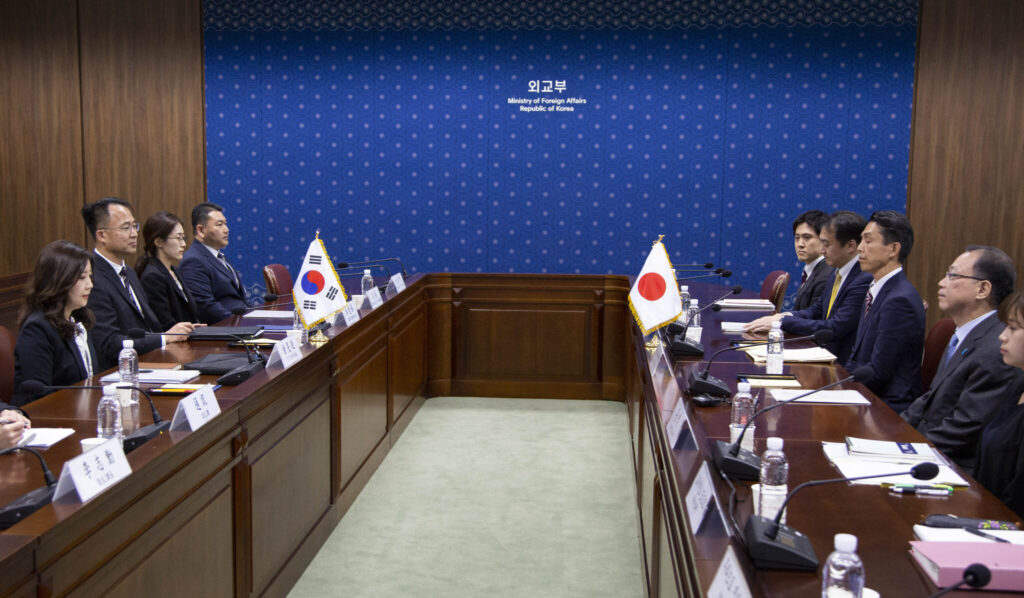
The U.S.-South Korean aerial drills are designed to enhance combined airpower execution and train aircrews to successfully respond in combat scenarios involving robust surface-to-air and air-to-air threats, according to the militaries. The training events “reaffirm the U.S.’s ironclad commitment to the ROK,” the U.S. Seventh Air Force said in a statement, using the initials of South Korea’s formal name, the Republic of Korea.
Also Monday, South Korea and Japan resumed a security meeting of senior diplomats and defense officials following a five-year hiatus. The meeting is one of many recent events that show ties between Seoul and Tokyo are improving in the face of North Korea’s evolving nuclear threats after years of disputes over history and trade.
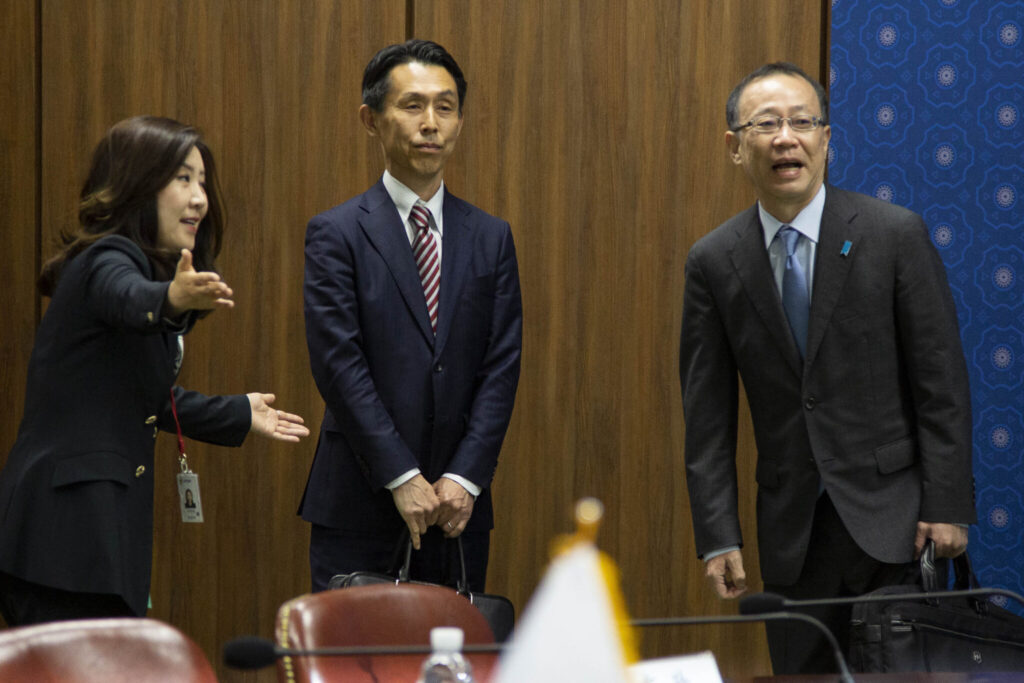
During Monday’s meeting, South Korea’s Defense Ministry said Seoul and Tokyo discussed North Korea’s nuclear program and a trilateral cooperation with the United States.
The United States and South Korea conducted their biggest filed exercises in years in March and have also held separate naval and aerial drills involving a U.S. aircraft carrier battle group and nuclear-capable B-52 bombers. The North responded by dialing up its own testing activity.
Monday marks 11 straight days that North Korea has not responded to South Korean checkup calls on a set of cross-border inter-Korean hotlines, South Korean officials say, raising concerns about potential kinetic provocations. Communications on those channels are meant to prevent accidental clashes along the rivals’ sea borders.
On Saturday, a South Korean naval vessel fired warning shots to repel a North Korean patrol vessel that temporarily crossed the countries’ disputed western sea boundary while chasing a Chinese fishing boat. There were no exchanges of fire between the North and South Korean vessels.
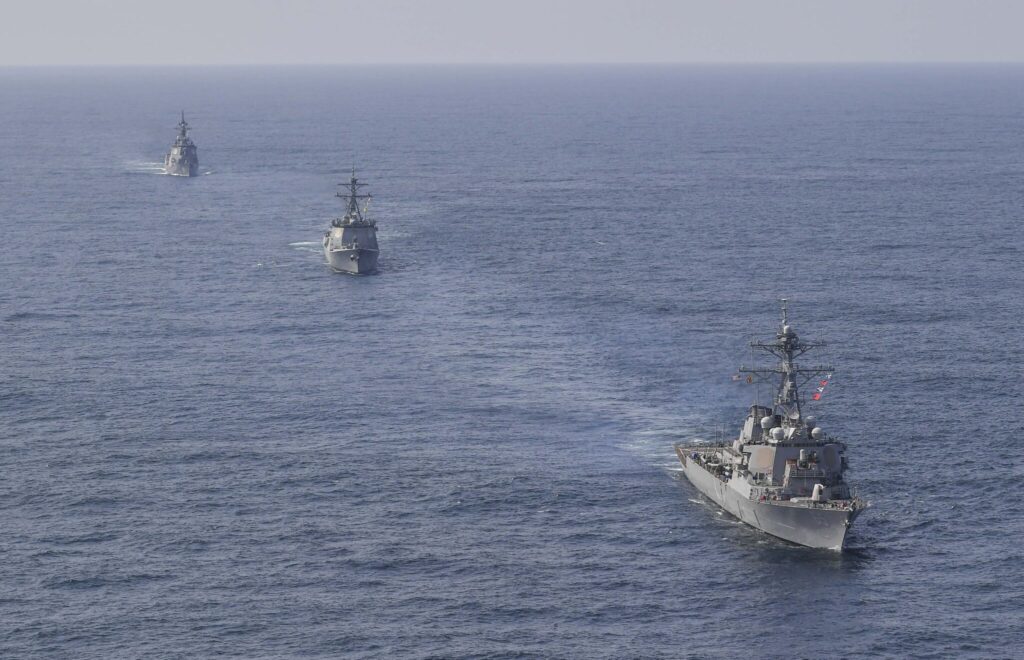
While the South’s military strengthened monitoring and readiness after the intrusion, it didn’t immediately detect any unusual activity from the North Korean military, Joint Chiefs of Staff spokesperson Lee Sung Jun said Monday.
North Korea’s aggressive nuclear push under ruler Kim Jong Un is aimed at forcing the United States to accept the idea of the North as a legitimate nuclear power and negotiating economic concessions from a position of strength, many experts say. Nuclear talks between Washington and Pyongyang have remained derailed since 2019.
However, there are also signs that the costs of Kim’s campaign is piling up as North Korea apparently grapples with food insecurity and other domestic problems worsened by pandemic-related border restrictions that disrupted trade with China, its main ally and economic lifeline. Chasing tangible economic achievements, Kim’s government has prioritized construction and agricultural projects.
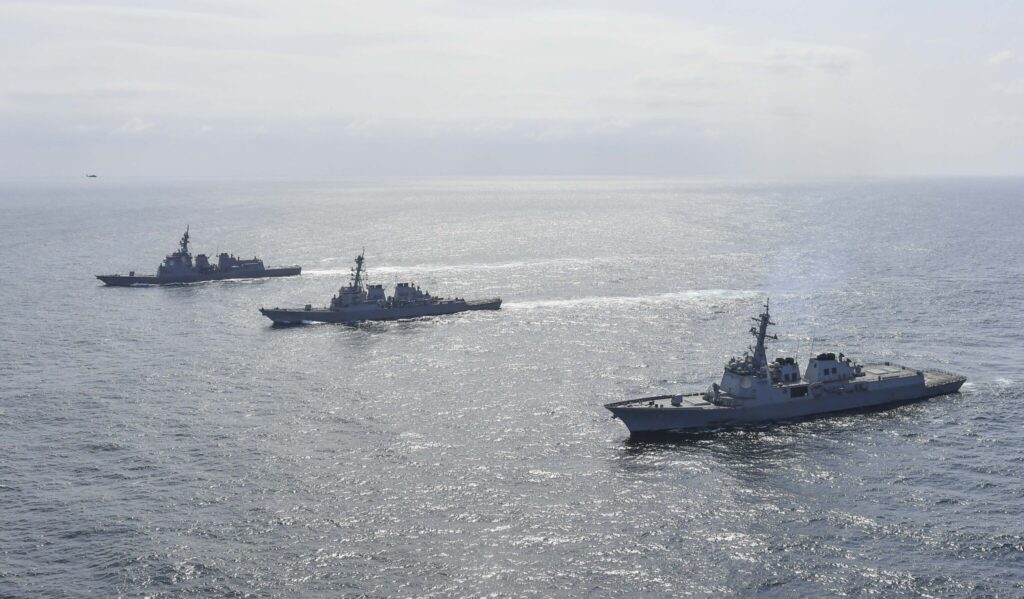
The North’s official Korean Central News Agency said Monday that Kim attended an event over the weekend celebrating the building of 10,000 new homes at a district in Pyongyang. The project is part of broader plans to supply 50,000 new homes in the capital under a five-year national development plan that runs through 2025.
During Sunday’s event, Kim called the housing project a “long-cherished plan” aimed at providing his people with “more stable and civilized living conditions,” KCNA said.
Experts say North Korea has severe shortages in quality housing that deepened over decades of economic decay. But living conditions are much better in Pyongyang, where Kim in past years has pushed huge development projects that upgraded housing for elites and changed the city’s skyline.

